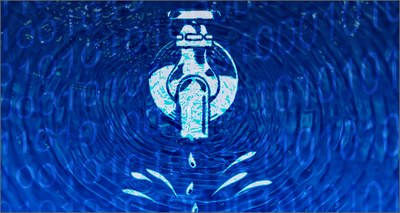World Water Day: A patent by ENEA to detect harmful substances in water distribution networks
21/3/2019
 On the occasion of World Water Day (March 22), ENEA presents a patented system capable of estimating the concentration of harmful subsances in the water network, allowing for a timely and cheaper management of possible emergencies. Developed by ENEA researchers in the Portici Research Center (Naples), in collaboration with the University of Naples Federico II, it was tested in the "Santa Sofia" aqueduct managed by Acqua Campania Spa.
On the occasion of World Water Day (March 22), ENEA presents a patented system capable of estimating the concentration of harmful subsances in the water network, allowing for a timely and cheaper management of possible emergencies. Developed by ENEA researchers in the Portici Research Center (Naples), in collaboration with the University of Naples Federico II, it was tested in the "Santa Sofia" aqueduct managed by Acqua Campania Spa.
The system allows water service operators both to estimate in real time and predict the concentration of trihalomethanes, i.e. the by-products of chlorine, used against pathogenic microorganisms, and make the water drinkable along the entire path, up to the end user .
“When chlorine gets in contact with the organic substance normally present in water, it tends to react, forming disinfection by-products known to be carcinogenic and toxic to human health, and for which national and European regulations on drinking water quality have set values concentration threshold ” Grazia Fattoruso, researcher at the ENEA Portici Centers and among the inventors of the patent, pointed out.
The software allows to process trihalomethanes concentration data through fixed and mobile sensors, integrated with computational intelligence algorithms and a platform for simulating hydraulic behavior and water quality.
"Thanks to this innovative system, managing bodies can identify exactly the network segments affected by the variation of trihalomethane concentrations, the times in which the phenomenon occurs, send teams for extraordinary measures campaigns only along the contaminated network sections, interrupt the service for a defined time, limiting it exclusively to the population concerned, thus optimizing operating and economic resources ", Fattoruso continued.
To date, the control procedures used by water network operators are based on sampling and laboratory analyses periodically carried out in points scattered along the aqueduct, with significant costs. Furthermore, the dynamism of an aqueduct and the impossibility of accessing some sections don’t allow continuous monitoring throughout the network.
"Given the characteristics of the patent, we believe it can provide managing bodies with a new opportunity to carry out continuous and widespread monitoring of water infrastructures at reduced costs, and optimize control and management of water quality," Fattoruso concluded.
For more information please contact:
Grazia Fattoruso, ENEA - Innovative Devices Laboratory, Portici Research Center, grazia.fattoruso@enea.it
